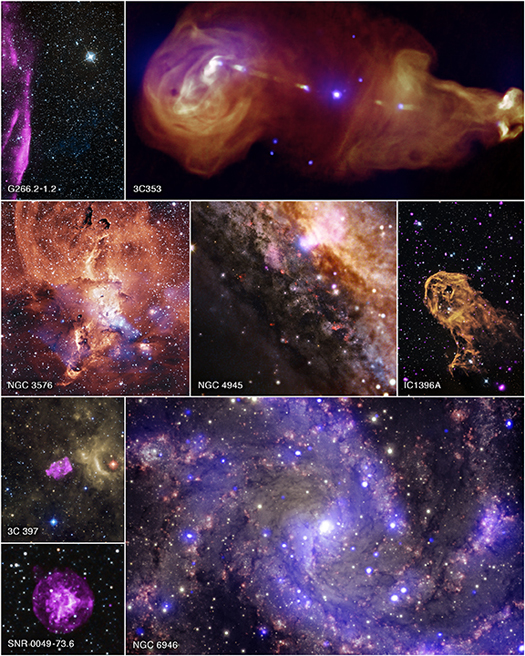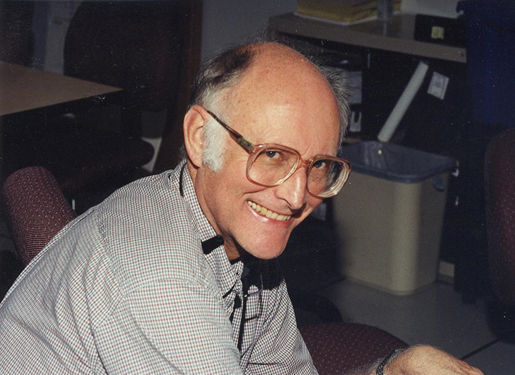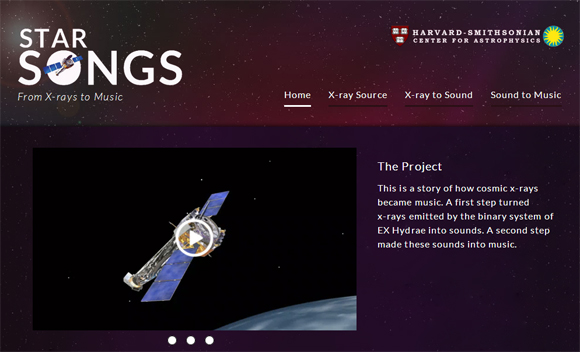General
Chandra and the Camelopardalids
Update (05.28.14): According to the team at the OCC, Chandra was unharmed during this new meteor shower. They report that passage through the stream was 'thankfully unremarkable.' According to all of their information, there was no evidence for any type of impact and it was 'smooth sailing.'
This week, sky watchers will be treated to a special event: a new meteor shower. Meteor showers occur when Earth, on its orbit around the Sun, passes through the debris left behind by a comet. There are some debris fields that Earth passes through every year and produce regular meteor showers that many people have heard of. These include the Leonids in November and the Perseids in July and August.
Chandra "Enthusiastically Endorsed" for Extension in Senior Review
Peter Edmonds is the Chandra Press Scientist and, in addition to his work on publicizing Chandra science, has been heavily involved with the Chandra's Senior Review proposal since 2008.
In science, "peer review" is used to describe a process that determines whether a research paper should be published in a journal. One or more experts review the paper and determine its fate: are the results and discussion reliable and do they meet the publication standards of the journal?
What Makes an Astronomical Image Beautiful?
Astronomy is renowned for the beautiful images it produces. It's not hard to be impressed by an image like the Pillars of Creation or the Bullet Cluster, and the more eye-catching an image is, the bigger an audience it can potentially reach. So, as part of our job in astronomy outreach, we have each spent time thinking about what makes an astronomy image beautiful. As professionals, we’d like to go well beyond the intuition of the person who says, "I don't know anything about art, but I know what I like". One approach(1) is to list the key elements that make an image beautiful.
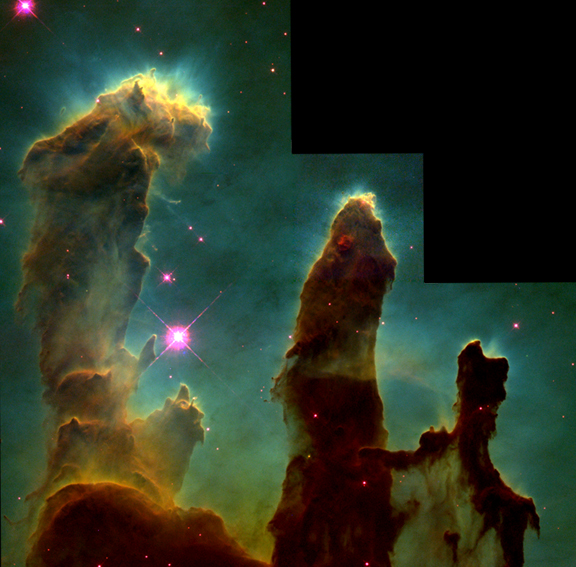 |
 |
Two famous images, the Pillars of Creation from the Hubble Space Telescope on the left and the Bullet Cluster from the Chandra X-ray Observatory, Hubble and ground-based observatories on the right. Credit: left: NASA, ESA, STScI, J. Hester and P. Scowen (Arizona State University); right: X-ray: NASA/CXC/CfA/M.Markevitch et al.; Optical: NASA/STScI; Magellan/U.Arizona/D.Clowe et al.; Lensing Map: NASA/STScI; ESO WFI; Magellan/U.Arizona/D.Clowe et al.
Finding Patterns

Image: Frank Kovalchek, Wikimedia Commons
One of our favorite games to play with our kids is trying to find recognizable objects in clouds as they pass by on a sunny day. One cloud might look like an elephant, the next, a pirate ship.
Carnival of Space #328
Welcome to this week's Carnival of Space. It's been a busy Universe out there so let's jump right into it.
The Urban Astronomer has an excellent recap of Hubble's observations of a very unusual asteroid. This asteroid not only has a comet-like tail, it has six of them. Oh yeah, and they apparently change.
Over at the Smithsonian's Air & Space blog, they discuss a very provocative issue: if we go back to the Moon, where should we go and, maybe more importantly, where shouldn't we?
In advance of the recent Maven launch to Mars, the good folks over at Universe Today feature an excellent video that summarizes where the Curiosity rover has been and also where it will be heading in the future.
Getting a Sense of Place in our Universe
The biggest science news this week, by far, has been a new study suggesting that Earth-sized planets in habitable zones may be very common. This is exciting news – who wouldn't want to have more cosmic planetary friends out there that maybe one day we'll be able to explore? By the latest accounts, there could be billions of Earth-like planets out there in our Milky Way galaxy.
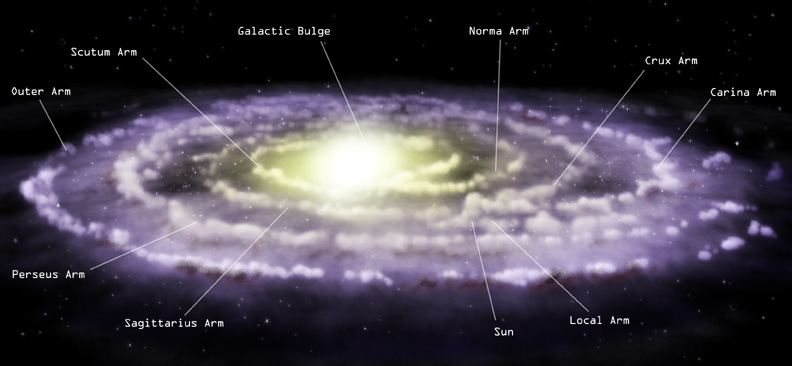
Preserving the Legacy of the X-ray Universe
Every year, October is designated as American Archive Month. While many people may think "archive" means only dusty books and letters, there are, in fact, many other types of important archives. This includes the use of archives for major telescopes and observatories like NASA's Chandra X-ray Observatory.
Mirror Man
Less than 50 years after the first detection of an extrasolar X-ray source, the Chandra X-ray Observatory has achieved an increase in sensitivity comparable to going from naked-eye observations to the most powerful optical telescopes over the past 400 years. Many individuals have been involved in this phenomenal accomplishment, but in this contribution, we focus on one: Leon Van Speybroeck.
Leon Van Speybroeck (Credit: NASA/MSFC/K. Stephens)
Leon was one of a number of newly minted MIT physics Ph.D.'s (including Paul Gorenstein, Martin Zombeck, Ethan Schreier, and one of us (HT)) who in the mid-late1960's made the short move from the MIT campus to the revamped milk-truck garage a few blocks away that was the site of American Science & Engineering. It was there that Riccardo Giacconi had assembled an X-ray astronomy group that had discovered the first cosmic X-ray source during a short rocket flight.
Chandra’s 14th Anniversary: Looking Back and Looking Ahead
Fourteen years ago this week, NASA's Chandra X-ray Observatory was launched into space on the space shuttle Columbia. I didn't witness this spectacular event, but I know many who did. Those who had worked on Chandra's development for many years must have experienced a powerful mixture of nerves, excitement and satisfaction.
Transforming Science into Sound
A new recently announced project is showing how science and art are not so far apart. In this case, the science in question is data from NASA's Chandra X-ray Observatory. The art that is involved is music.
This project is called "Star Songs" and was started by Wanda Diaz Merced who came to visit the Harvard-Smithsonian Center for Astrophysics (CfA) in 2011, where Chandra's Science Center is located, to work on her doctoral dissertation. Diaz Merced, who lost her sight while studying physics in her early 20s, had been using sonification - a technique to display data as sound - to continue her astrophysical research.

